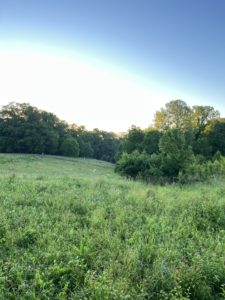Dealing with the Heat
The last couple of weeks have seen heat advisories and heat indexes over 100 degrees F. That is a real issue when you have animals outside. How do we deal with the heat at The Shire?
Our main tool for dealing with the sun is shade! We don’t have just one tree that every animal clusters under like some farms you might have seen. We have built in rows of trees so that animals are NEVER without shade. Trees not only provide shade, but they also release water vapor into the air. Under trees can be 10-15 degrees cooler than out in the sun as well as preventing sunburns from direct exposure.
In addition, we have to stay vigilant to keep water filled. Animals do drink much more water than usual during these hot temperatures.

Agroforestry
Cooler temperatures for animals is only one of the many rewards of agroforestry. The person who has inspired me the most on agroforestry has been Mark Shepard. (You can read about my opportunity to hear Mark Shepard in person by clicking here.)
Our first big project after purchasing The Shire was to plant 100+ trees: oaks, pecans, apples, hazelnuts (more of a bush), pawpaws, persimmons, mulberries, and honey locust. Those trees are now starting to provide rewards of shade and produce their fruits, but we are still several years away from hitting substantial production.
This year should be the first year we harvest hazelnuts and apples. There won’t be a large quantity, but we’re hoping that it is a sign of things to come.






